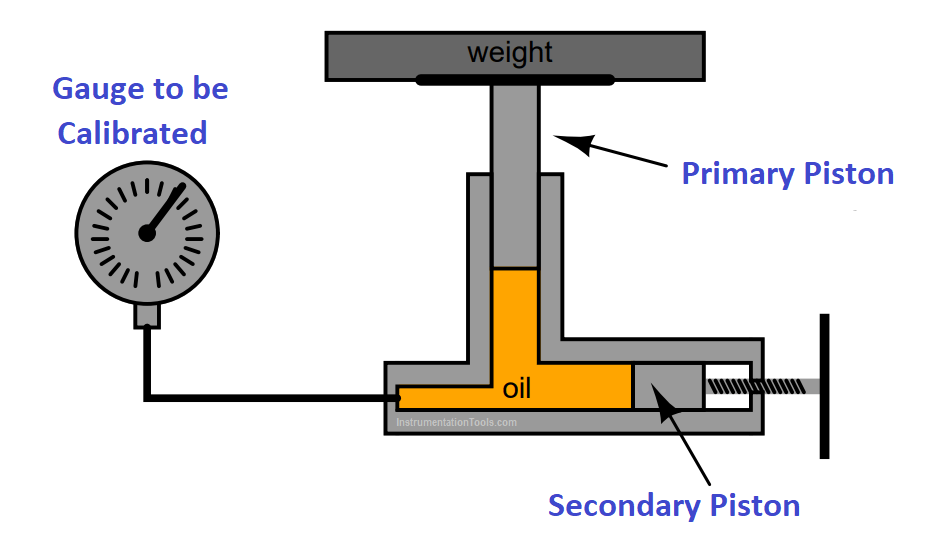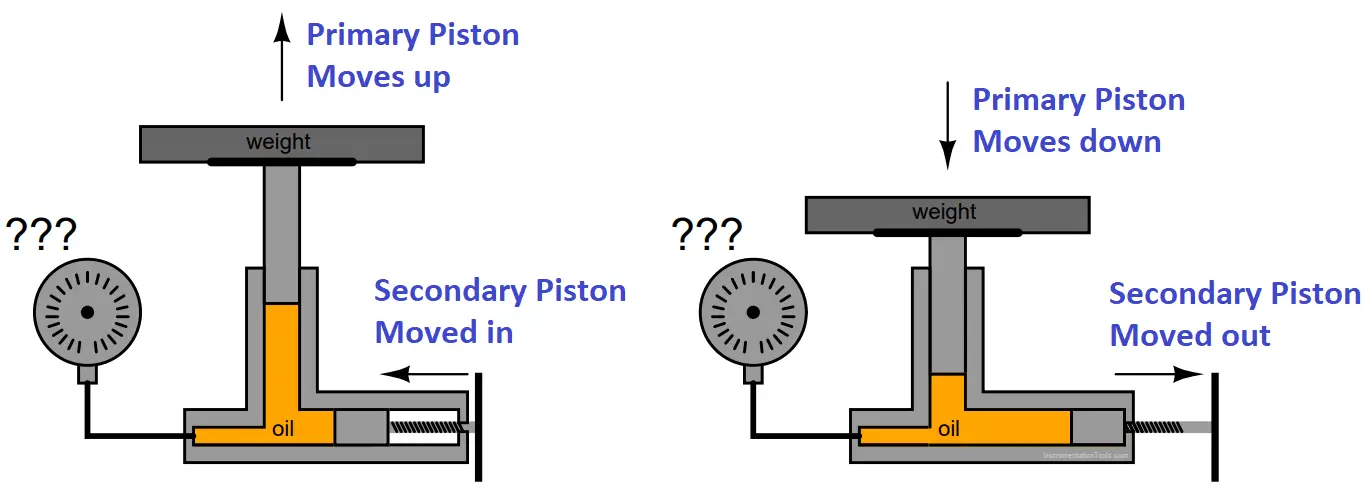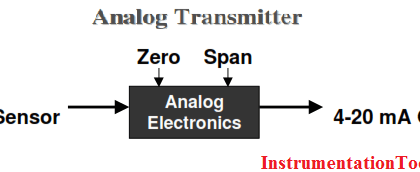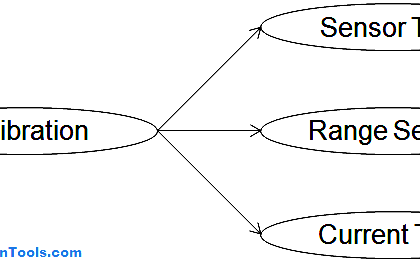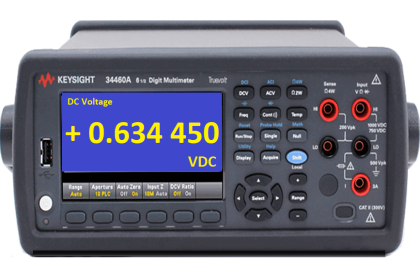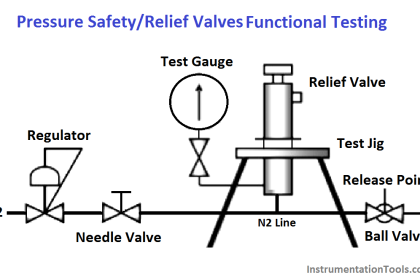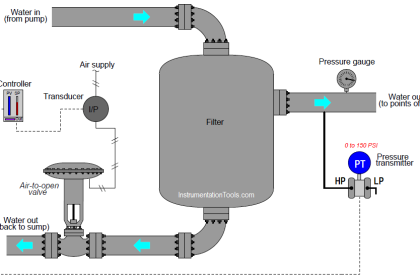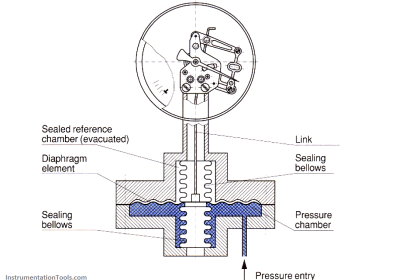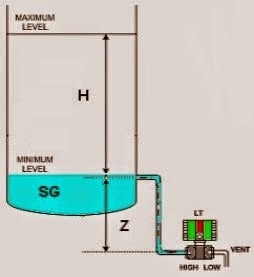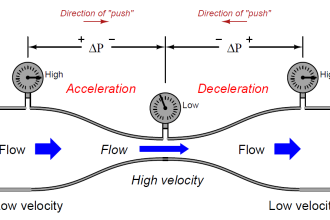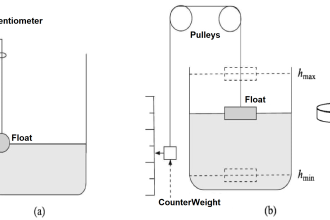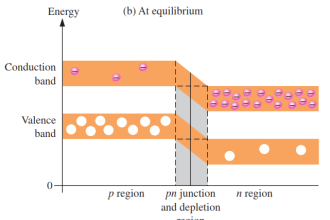A pressure calibration device called a deadweight tester generates very precise pressures by means of calibrated weights placed on top of a hydraulic piston.
The purpose of a deadweight tester is to serve as a guaranteed source of fluid pressure that may be trusted as a calibration standard, against which we may test the accuracy of a pressure-measuring instrument (e.g. a pressure gauge or pressure transmitter):
DeadWeight Tester
The secondary piston is moved in and out by turning a handle on a threaded rod. Its sole purpose is to displace enough oil to force the primary piston to rise from its resting position, so that it is entirely suspended by oil pressure. In that condition, the gauge will be subject to whatever pressure is proportional to the weights placed on top of the primary piston, and the area of the primary piston, according to the formula P = F/A .
What will happen to the gauge’s indication if the secondary piston is pushed in further? What will happen to the gauge’s indication if the secondary piston is pulled out, but not so far that the primary piston comes down to its resting position? In other words, what effect does the secondary piston position have on pressure applied to the gauge?
Question 1:
In each condition, what happens to the gauge’s indication? (from above picture)
Answer:
Ideally, the secondary piston’s position will have no effect on the oil pressure sent to the gauge. Consequently, the gauge indication should not change.
Question 2:
Does the applied pressure increase, decrease, or stay the same? (from above picture)
Question 3:
Why are deadweight testers considered accurate standards for fluid pressure? What is it about their design and operation that makes them so accurate? Conversely, what aspects of their construction would have to change in order to corrupt their inherent accuracy?
Question 4:
If a technician changes the type of fluid used in a deadweight tester (for example, from one type of oil to another), will its accuracy change?
Question 5:
Identify some potential problems one might encounter when using a deadweight tester. What things, specifically, do you see that could go wrong with this device?
Question 6:
What is it about the nature of a deadweight tester that makes it so accurate and repeatable? To phrase this question in the negative, what would have to change in order to affect the accuracy of a deadweight tester’s output pressure?
Answer:
The accuracy of a deadweight tester is fixed by three fundamental variables, all of which are quite constant, two of which can be manufactured to highly accurate specifications, and the third being a constant of nature:
- The mass of the calibration weights
- The area of the primary piston
- The gravity of the Earth
Question 7:
Why is it important for a deadweight tester to be level while it is being used to calibrate a pressure instrument?
Answer:
If a deadweight is not level, the force generated by the precision weights will not be parallel to the primary piston’s axis of travel, meaning that the piston will not support their full weight.
Question 8:
What effect will trapped air have inside a deadweight tester?
Answer:
Entrapped air will make the piston’s motion “springy” rather than solid and secure.
Question 9:
Why is it advisable to gently spin the primary piston and weights while the piston is suspended by oil pressure?
Answer:
Spinning the primary piston eliminates static friction, leaving only dynamic friction (which is much less) to interfere with gravity’s force on the primary piston.
Share your Answers with us through comments.
Read Next:
- What is Dead Weight Tester?
- Transmitter Calibration
- Instrument Calibration MCQ
- Pressure Standards
- Pressure Gauge Testing
Credits: Tony R. Kuphaldt
